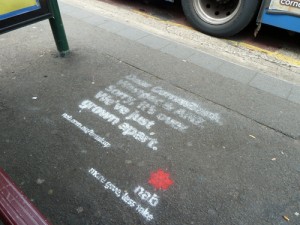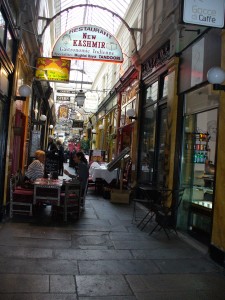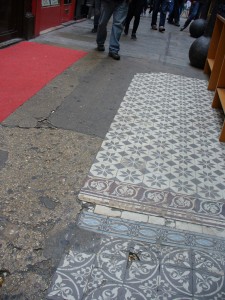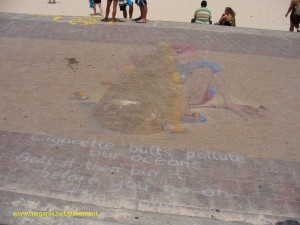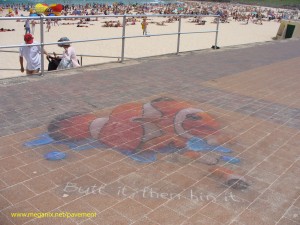Pavement advertising in Sydney has moved on since 1904. In that year bootmaker Joe Gardiner was nabbed by the police for whitewashing advertisements for his shop on the asphalt in Oxford Street near the entrance to Hyde Park. Joe’s fate is recorded in a correspondence file in the City of Sydney archives.
These days the footpath is a billboard, not only for small shops and garage sales, but also for corporations. In recent months NAB (National Australia Bank) has discovered the transgressive frisson of stencilling the pavement. At Sculpture by the Sea in November, advertisements on the Bondi to Tamarama walk made it evident that NAB was a sponsor of the event. On Valentine’s Day in February, city pavements were enlisted in a multiple media campaign announcing that NAB had split up with the other banks (whatever that means). Although these commercially creative works soon faded in the rain, their smeary remains are still visible in some places.
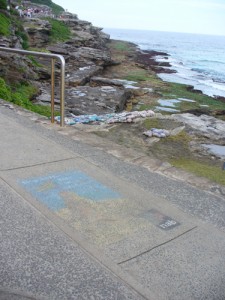
Sculpture by the Sea, Bondi-Tamarama, November 2010. In the background is Lucy Barker's installation 'Sea Cells'.
Defacing the pavement with any kind of marker is still illegal in the City of Sydney but, as I noted in an earlier blog post, perhaps council rangers have given up bothering about graffiti drawn with chalk or quasi-chalk.
Â
You can read more about footpath decoration and pavement advertising in two articles I have written:
Hicks, Megan. 2009. Horizontal billboards: The commercialization of the pavement. Continuum: Journal of Media and Cultural Studies 23 (6):765-780.
Hicks, Megan. The decorated footpath. Dictionary of Sydney.
